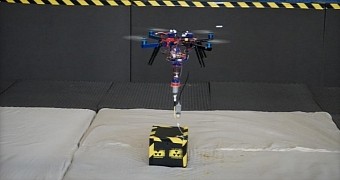Hollywood may have a somewhat mixed reputation in regards to its movies, with many people adoring them and just as many believing they have lost their originality, and that they are secretly brainwashing the masses into an ambivalent, drive-less mindset.
That's not what we're going to talk about today. Today, we're going to talk about one of the consequences of this simple fact: Hollywood movies still sell like bread, and that gives Hollywood a certain pull.
And now we see evidence of that pull, and how far the reach extends. Apparently, the US Federal Aviation Authority is the latest entity to cede to Hollywood's demands.
Well, maybe demand is a strong word. Repeatedly submitted request probably sounds better. Whatever the methods were, Hollywood has persuaded the FAA to lift some restrictions on the use of aerial drones.
Thus, from now on, six studios will be allowed to use flying drones to shoot films scenes and do whatever else they come up with.
The beneficiaries of the exemptions
Here is the list of studios that are going to be adding a new set of techniques to their film shooting methods: Vortex Aerial, Snaproll Media, HeliVideo Productions, Pictorvision, RC Pro Productions Consulting, Astraeus Aerial and Aerial MOB.
The drones will allow them to shoot footage from various new angles and heights, in addition to reducing the cost of making aerial shots.
Until now, studios had to hire helicopters to lift into the air and take recordings that way, but drones will be able to do the same things for a fraction of the cost, and better too.
The only worry will be the time they will be able to stay in the air, but it's not as though helicopters have unlimited fuel.
Admittedly, the FAA did allow commercial drone use in the past, sometimes, but only for surveys in Alaska, and a few other isolated incidents. Now, the studios mentioned above have carte blanche.
The rules
The exemption is conditional. For one thing, the drones must be flown within line of sight by operators who hold private pilot certificates. Also, the FAA still doesn't allow drone flying at night time. There may be some other restrictions, but they'll be outlined in the Certificates of Waiver or Authorization that haven't been issued yet.
There are 40 other exemption applications that the FAA hasn't gone through yet. If nothing else, Hollywood's success bodes well for them.

 14 DAY TRIAL //
14 DAY TRIAL //